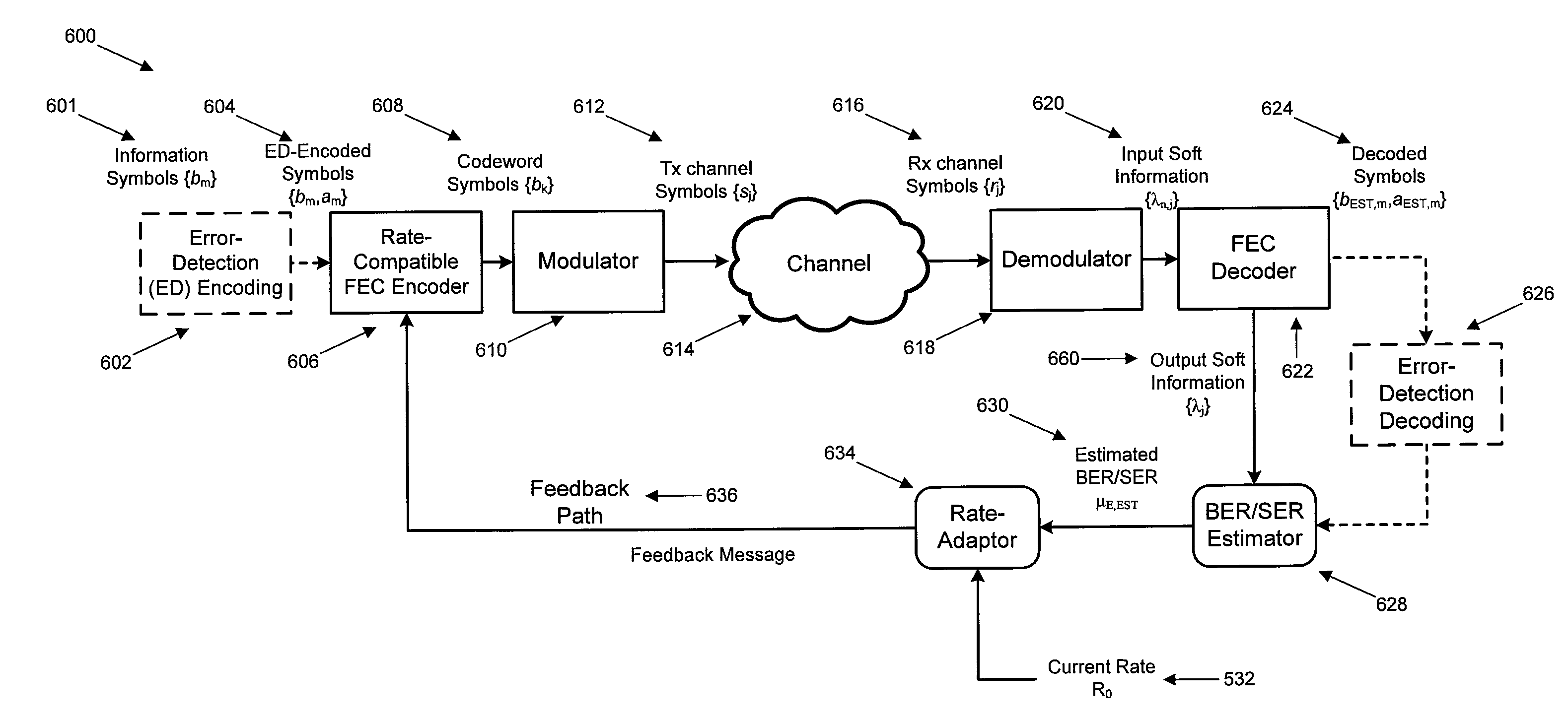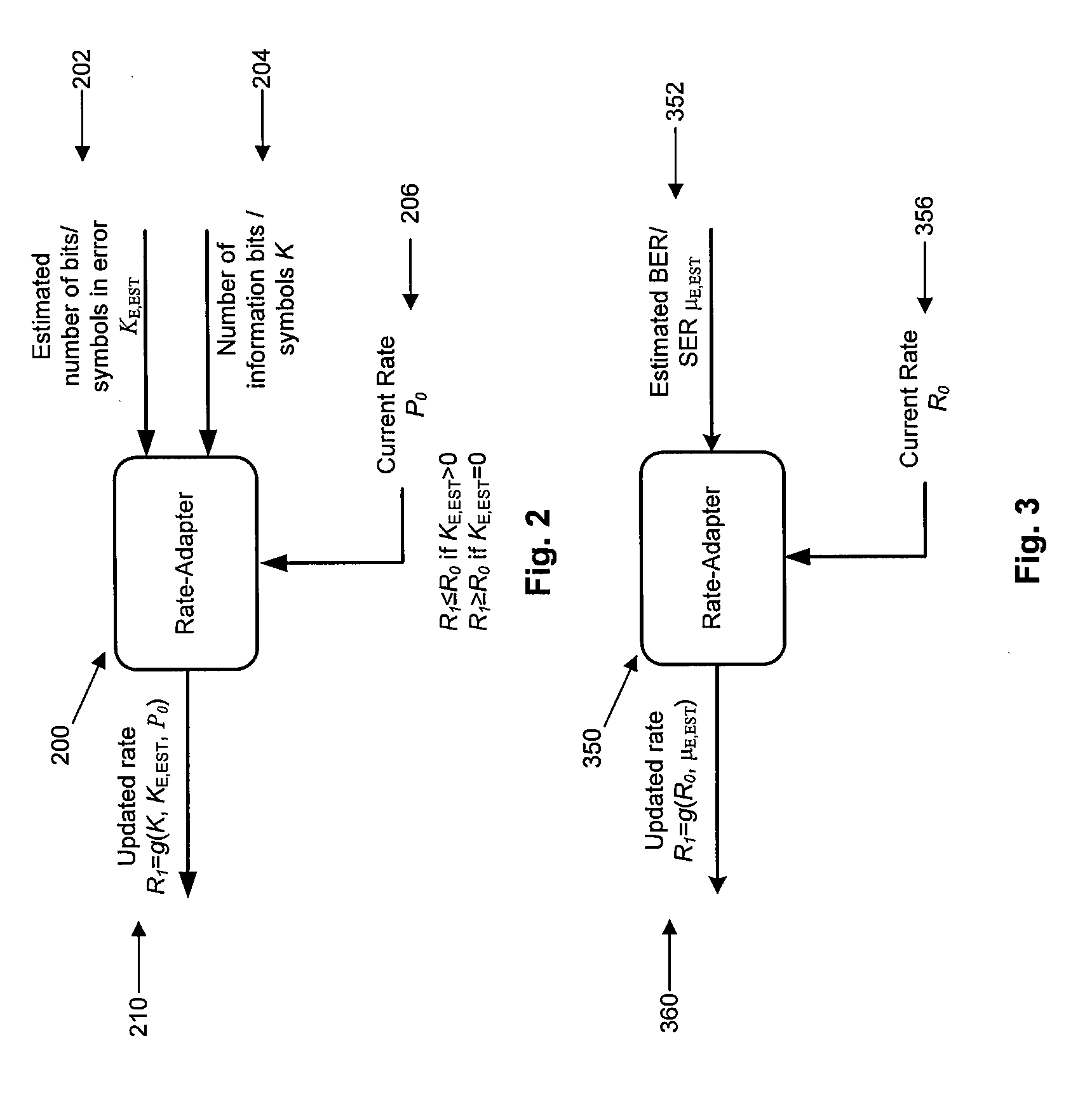Error rate estimation/application to code-rate adaption
a code-rate adaptation and error rate technology, applied in error detection/correction, instruments, coding, etc., can solve the problems of limiting the overhead of reliable communication, reducing the average throughput by the overhead of protocol, and low throughput cost of parity requests
- Summary
- Abstract
- Description
- Claims
- Application Information
AI Technical Summary
Benefits of technology
Problems solved by technology
Method used
Image
Examples
Embodiment Construction
rating a rate-adapter.
[0033]FIG. 3 is a block diagram illustrating another rate-adapter.
[0034]FIG. 4 is a block diagram illustrating a BER / SER estimator.
[0035]FIG. 5 is a block diagram illustrating a BER / SER estimator.
[0036]FIG. 6 is a block diagram a communication system implementing incremental-decremental redundancy with rate-adaptation based on BER / SER estimation.
[0037]FIG. 7 is a block diagram of a F-LDPC Encoder.
[0038]FIG. 8 is chart illustrating a comparison of the throughput of the incremental-decremental redundancy scheme shown in FIG. 6 in comparison to capacity with binary signal sets in AWGN, as a function of the channel SNR.
[0039]FIG. 9 is a chart illustrating the throughput of the incremental-decremental redundancy scheme—over two AR1 channels.
[0040]FIG. 10 is a chart illustrating sample channel-gain sequences for two AR1 channels.
DETAILED DESCRIPTION OF THE INVENTION
[0041]Embodiments according to the disclosure provide techniques for forward-error correction that over...
PUM
 Login to View More
Login to View More Abstract
Description
Claims
Application Information
 Login to View More
Login to View More - R&D
- Intellectual Property
- Life Sciences
- Materials
- Tech Scout
- Unparalleled Data Quality
- Higher Quality Content
- 60% Fewer Hallucinations
Browse by: Latest US Patents, China's latest patents, Technical Efficacy Thesaurus, Application Domain, Technology Topic, Popular Technical Reports.
© 2025 PatSnap. All rights reserved.Legal|Privacy policy|Modern Slavery Act Transparency Statement|Sitemap|About US| Contact US: help@patsnap.com



